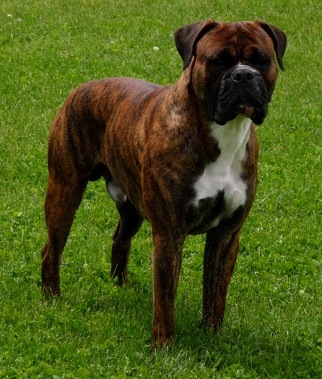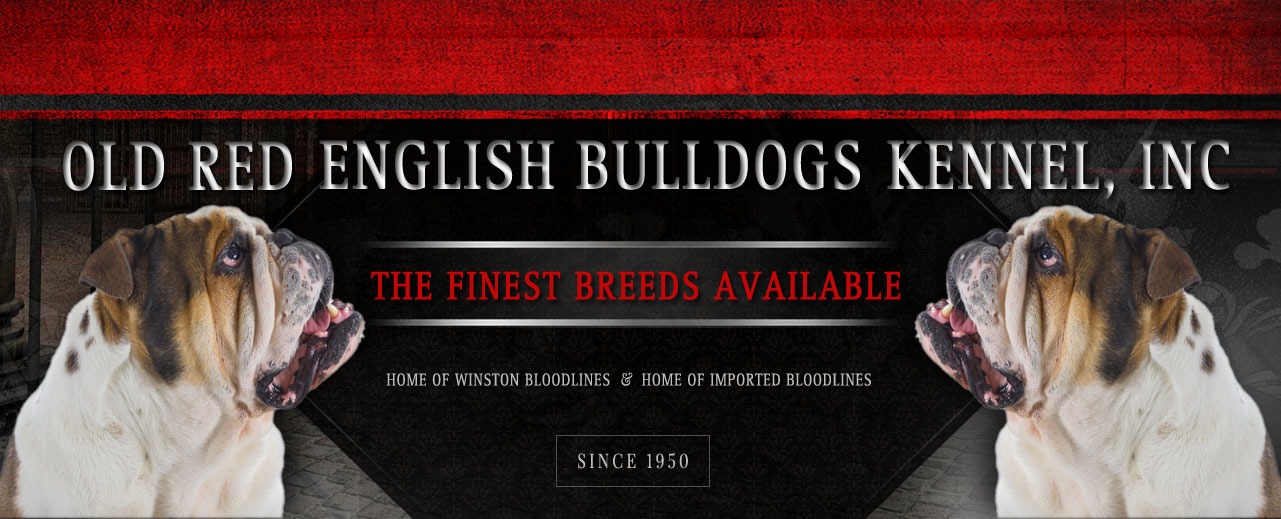
General Description
The Valley Bulldog is a cheerful and sturdy breed with no exact breed standard, leading to some variations. For example, some have a short, pressed-in muzzle, while others have a longer one. Their head and neck are broad, and they have small ears that fold over and hang slightly on the sides of their head. Their legs are longer than those of many other Bulldogs, but their tails are very short—almost nonexistent. Their eyes are small and semi-oval in shape, and the breed often has an underbite. Their coat is short and sleek, similar to that of a Boxer. The Valley Bulldog originates from a cross between the American Bulldog, Boxer, and English Bulldog and was developed in Annapolis Valley, Nova Scotia, Canada, which is where its name comes from. Their fur comes in many colors, including black, white, red, fawn, and various brindle mixtures.
Character:
The Valley Bulldog loves being around humans and enjoys playing with children and other dogs. This breed is both playful and intelligent, learning quickly and excelling at tricks. However, their high intelligence also makes them independent and sometimes stubborn. They are protective of their family and will bark at unusual noises but are generally calm indoors. Occasionally, they may have short bursts of energetic running through the house, but these don’t last long. Due to their occasional disobedience and considerable strength, they require a firm and consistent trainer.
Size:
17 – 25 inches (31 – 64 cm)
Weight:
60 – 125 pounds (23 – 57 kg)
Health Problems:
A great deal of attention must be given to keeping the folds of skin on the face and in the tail area clean and dry, as these areas are highly prone to infection if not cleaned daily. Valley Bulldogs also tend to develop skin irritations and allergic reactions. An overweight Valley Bulldog can become problematic if its diet is not properly monitored. Some may experience breathing issues, depending on how pushed in their snout is. They can also snore and be prone to flatulence at times. Drooling is usually not a problem unless the dog is exposed to excessive heat or is anticipating a special treat. The life expectancy of a Valley Bulldog is typically around 10 to 12 years.
Maintenance:
The Valley Bulldog is fairly easy to groom, requiring brushing only occasionally and a bath only when they get filthy. The most important aspect of their grooming is keeping their tail, face, and belly clean and dry, so they should be thoroughly dried after baths or being out in the rain, as improper drying can lead to skin infections. While they do shed, it is not excessive. Valley Bulldogs need long, fast-paced walks and regular mental stimulation to stay active and healthy.
Grooming:
The Valley Bulldog has a soft, smooth coat with short fur that is easy to maintain. They need to be brushed or combed occasionally and may be wiped down with a wet cloth. Baths are only necessary if they get particularly dirty. The folds of skin on the face, tail, belly, and genital area (for females) should be kept clean and dry daily, with particular attention paid to drying these areas completely after a walk in the rain or a bath, as failure to do so can lead to infections. The Valley Bulldog is an average shedder.
Ideal Environment:
The Valley Bulldog is a friendly and gentle breed that loves being around people and does well with children. They are also friendly with other dogs and small animals. Valley Bulldogs thrive in moderate climates and do not handle extreme temperatures well. Ideally, they should be indoor dogs that receive plenty of attention, as well as regular strenuous exercise and training from a firm owner. Families who don’t want to spend much time on grooming may find the Valley Bulldog a good match, as long as they remember to keep them dry. If well-exercised, the dog can be happy in either an apartment or a house.
These are the Bulldogs and Mastiffs we breed and sell.
The pictures on each page are for identification purposes and OldBulldogs.com does not own every animal pictured. These pages are informational and intended to describe the standards of each breed.
- Alano Español
- Alapaha Blue Blood Bulldogs
- American Bandogge Mastiffs
- American Bully-Bullies
- American Pit Bull Terriers
- American Staffordshire Bullies
- American Staffordshire Terriers
- Arkansas Giant Bulldogs
- Australian Bandogge Mastiffs
- Australian Bulldogs
- American Bulldogs-Old Time Southern Bulldogs-Old Southern Whites
- Banter Bulldogs
- Boxer Bulldogs
- Bull Terriers
- Bull Mastiffs
- Miniature Bull Terriers
- Mexican Bulldogs
- Miniature English Bulldogs
- Neapolitan Mastiffs
- Old Boston Bulldogs
- Olde English Bulldogges
- Old Victorian Bulldogs
- Patterdale Terrier
- Perro de Presa Canario
- Performance-Standard Type American Bulldogs
- Perro de Presa Mallorquin
- Panja Mastiffs
- Renascence Bulldogs
- South African Boerboel
- Staffordshire Bull Terriers
- Saint Bernard
- Valley Bulldogs
- Winston Working Bulldogs
- Winston’s Working Mastiffs
- Winston’s Working Terriers
- Winston’s Working Hounds
- Winston’s Working Shepherds
